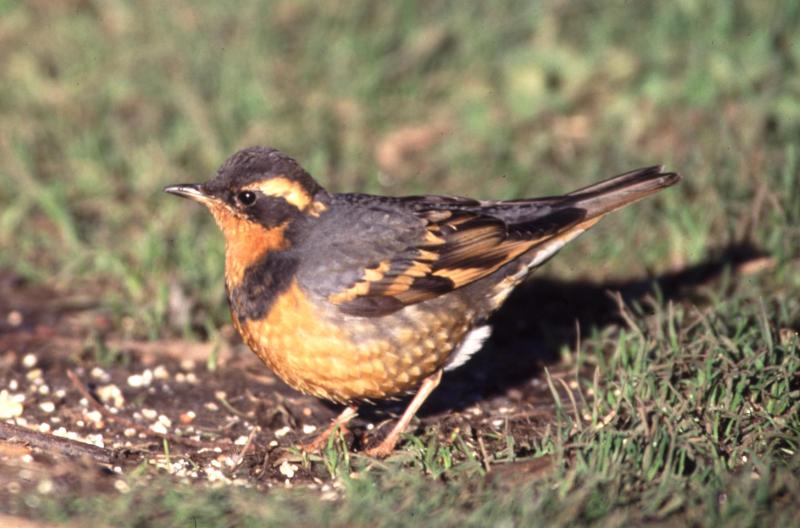The Varied Thrush - The Northern Robin
by Dave Hanks
If you are in “wild” country, and will but stop to listen, there is a whole cornucopia of sounds. Some sounds, like Elk bugling or geese honking overhead, are very intriguing. One such sound haunted my wife and I over and over again whenever we were in northern Canada. It was a bird call. We could never pin-point the location from which it came and, because it was a call we were not familiar with, could not identify the species. One evening, southward bound out of the Yukon into northern British Columbia, we were resting our bodies by lying in an open-air hot pool at Liard Hot Springs, B.C. We heard that haunting call again, very close this time. It was coming from a branch just above our pool. It was a Varied Thrush, and it was very mesmerizing to be soaking in hot water, out of doors, and having that bird serenade us!
This Thrush is slightly smaller than the American Robin, but it also has a reddish-orange breast. The breast, however, has a bluish stripe across it. The face also has a stripe across the eye, and the male’s back and crown are a bluish tint. This summer resident of the far north migrates to the Washington, Oregon, and California coasts for the winter months. We have even been lucky enough to have had one of them in our yard one spring -
a rare southern Idaho occurrence.
Varied Thrushes like to nest in mature, coniferous woodlands that are dense and moist. If you have been in the far north, you will realize that there are lots of insects. These birds like to spend much time in the trees feeding upon them and will defend their feeding territory from intruders. They do this by first turning their back and giving a tail-up display. If that doesn’t work, the male will then turn to face the problem and extend his wings to display the colors on his under-wings, plus the white tips on his tail. The tail is then extended over his head.
The logging of mature forests has caused a reduction of breeding populations of this species. My wife has a love affair with this beautiful bird, and we would feel sad if we could no longer hear its eerie song.
(Along the Oregon coast in February)
|
